This post may contain affiliate links. I try to make my posts as helpful as possible and have great products easy for you to access. The use of these links provides me a small commission at no cost to you. As an Amazon Associate, I earn from qualifying purchases.
Jigsaw vs Circular Saw – Learn which tool is best suited for your needs
When it comes to woodworking and DIY projects, having the right tools for the job is essential. Jigsaws and Circular Saws are two of the most popular and versatile cutting tools available. However, they differ in several ways, making it challenging to determine which one is best suited for your needs. In this article, we’ll compare Jigsaw vs Circular Saw and help you choose the right tool for your project.
In this post you will find:
- Jigsaws
- Circular Saws
- Jigsaw vs Circular Saw: Which Do I Want?
What is a Jigsaw?
A jigsaw is a handheld saw with a reciprocating blade that moves up and down to cut through various materials such as wood, plastic, and metal.
It is best used for cutting curves and intricate designs that require precision and flexibility. Jigsaws come in different sizes and types, including corded and cordless models, and with varying blade sizes and types.
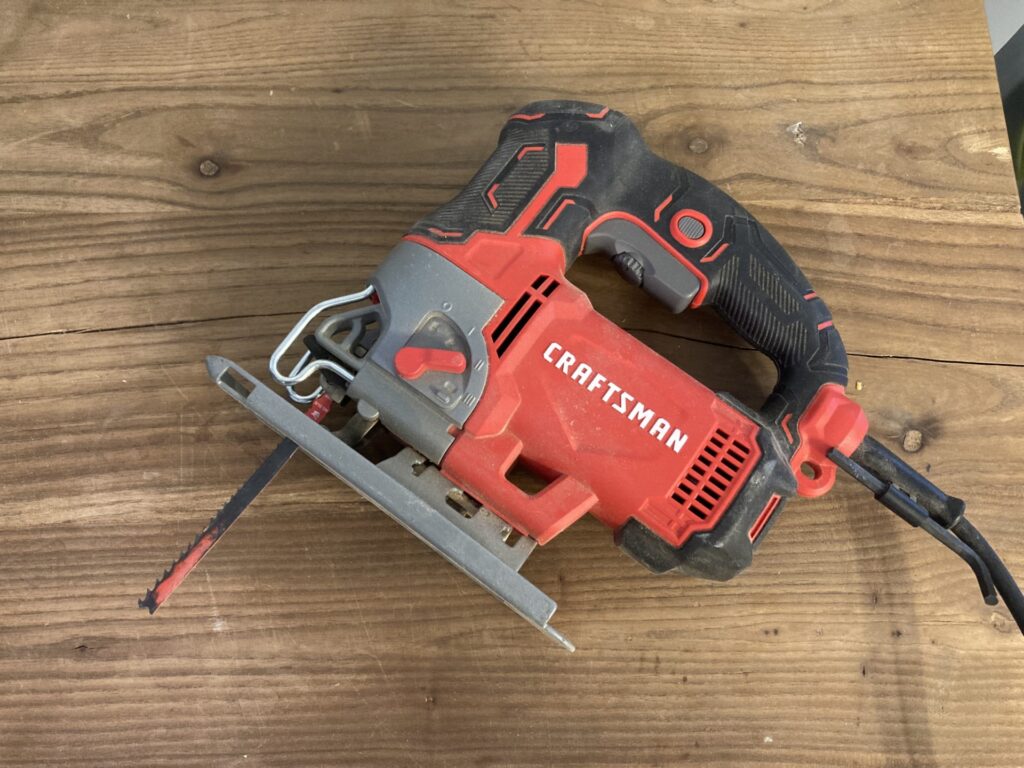
Jigsaw Uses
- Making Curved Cuts: Jigsaws are great for cutting curved lines in a variety of materials such as wood, plastic, and metal. They can easily create intricate designs and shapes, making them ideal for projects like creating scrollwork on furniture or cutting out custom shapes for signs.
- Plunge Cutting: Jigsaws are unique in that they can make plunge cuts, which are cuts made directly into the middle of a piece of material. This allows you to create openings in the middle of a piece of wood, for example, or to cut holes in walls for electrical outlets.
- Trimming: Jigsaws are great for trimming excess material from the edges of a project. For example, if you’ve installed new countertops, a jigsaw can be used to trim the edges to fit perfectly against the wall.
- Making Intricate Designs: Jigsaws are perfect for creating intricate designs in a variety of materials. They can be used to create designs in wood, plastic, and metal, making them ideal for art projects, decorative accents, and more.
Cutting Straight with a jigsaw
Cutting straight lines with a jigsaw can be a bit challenging, as the blade moves up and down in a reciprocating motion, making it difficult to maintain a straight line. A circular saw or table saw would be more ideal for cutting straight lines. However, if you don’t have a miter or circular saw, there are several techniques you can use to help you cut straight with a jigsaw:
- Use a Straight Edge: One of the easiest ways to cut straight with a jigsaw is to use a straight edge as a guide. Simply clamp a straight piece of wood or metal to your workpiece, aligning the edge with the cut line, and use the jigsaw to cut along the edge. This will help keep the blade on a straight path and prevent it from wandering off course.
- Use a Guide Fence: If you’re making a long straight cut, you can use a guide fence to help you keep the jigsaw on track. A guide fence is a straight piece of wood or metal that is clamped to the workpiece and acts as a guide for the jigsaw. Simply set the jigsaw against the guide fence and follow it along the cut line.
- Use a Laser Guide: Some jigsaws come with a built-in laser guide that projects a line onto the workpiece, indicating where the blade will cut. This can be a helpful tool for cutting straight lines, as you can simply follow the laser guide along the cut line.
- Use Proper Technique: Proper technique is essential for cutting straight with a jigsaw. Hold the jigsaw firmly with both hands, keeping the blade perpendicular to the workpiece. Start the cut slowly and keep a steady hand, guiding the blade along the cut line. If the blade starts to wander, stop the cut and readjust your position before continuing.
Learning how to cut a straight line with a jig saw takes practice and patience, but with the right technique and tools, it can be done successfully.
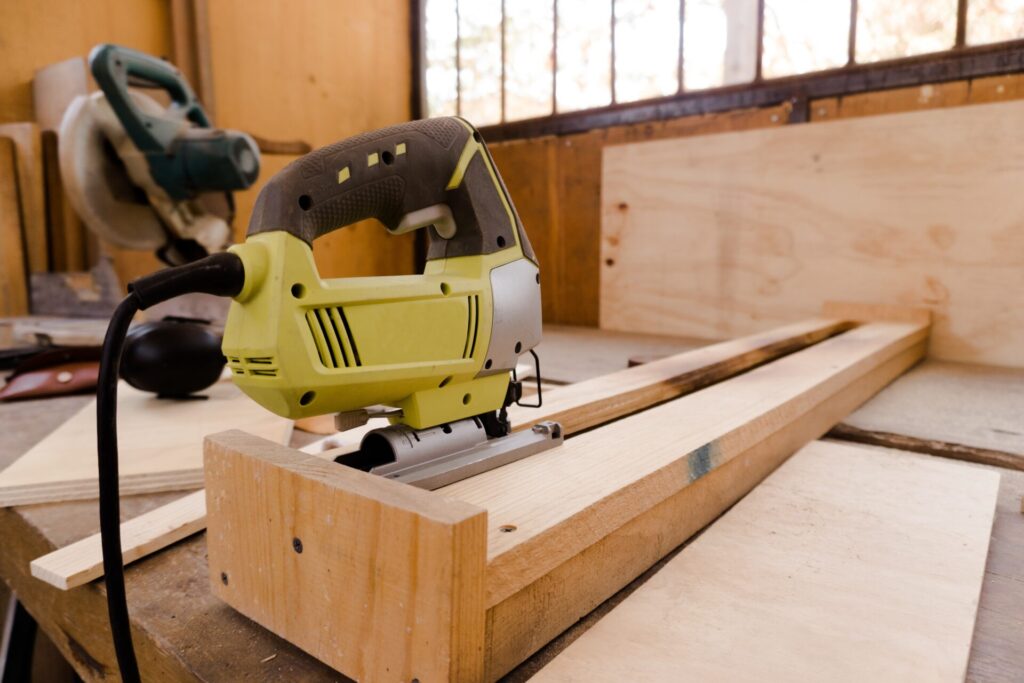
How to Cut a Circle with a Jigsaw
Cutting a circle with a jigsaw is a bit different than cutting straight lines, but it can be done with the right technique. Here are the steps to follow:
- Mark the Center Point: Start by marking the center point of the circle you want to cut. Use a compass to draw a circle on the workpiece, making sure the center point is clearly marked.
- Drill a Starter Hole: Use a drill with a bit that is slightly larger than the width of the jigsaw blade to drill a starter hole at the center point of the circle. This hole will allow you to insert the jigsaw blade and start the cut.
- Insert the Jigsaw Blade: Insert the jigsaw blade through the starter hole. Make sure the blade is perpendicular to the workpiece.
- Start the Cut: Turn on the jigsaw and slowly start the cut, move towards the cut line around the circle. Keep a steady hand and move the jigsaw in a slow, steady motion, allowing the blade to do the work. Be sure to keep the blade perpendicular to the workpiece at all times.
- Sand and Finish: Once you’ve completed the cut, use sandpaper or a file to smooth the edges of the circle. You can also use a router to create a decorative edge or finish the circle in any other way you prefer.
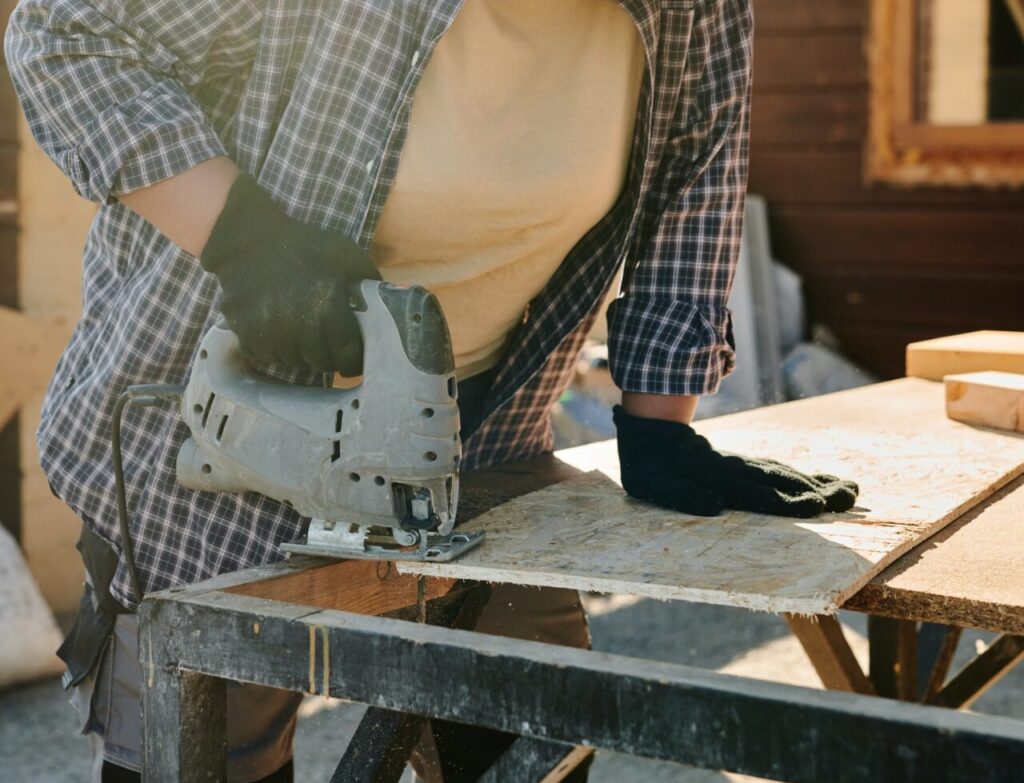
How to Change a Jigsaw Blade
Changing a jigsaw blade is super simple! But you want to make sure you do it correctly because the last thing you want is a rouge blade going flying. Here’s how to change a jigsaw blade:
- Unplug the Jigsaw: Before you begin, make sure the jigsaw is unplugged or the battery is removed to prevent any accidental starting.
- Locate the Blade Release Mechanism: Look for the blade release mechanism on the jigsaw, which is typically located at the top of the blade housing. It may be a button or lever that you need to press or pull.
- Release the Blade: Press or pull the blade release mechanism to release the current blade from the jigsaw. Some jigsaws may have a locking mechanism that you need to turn before you can release the blade.
- Insert the New Blade: Take the new blade and insert it into the blade housing, making sure it is securely in place. The teeth of the blade should be facing forward, away from the jigsaw.
- Lock the Blade in Place: If your jigsaw has a locking mechanism, turn it to lock the blade in place. Otherwise, press or pull the blade release mechanism again to lock the new blade into position.
- Test the Blade: Once the blade is securely in place, turn on the jigsaw and test the blade by making a few cuts. Make sure the blade is aligned with the cut line and is cutting smoothly.
That’s it! With these steps, you can quickly and easily change the blade on your jigsaw and get back to work.
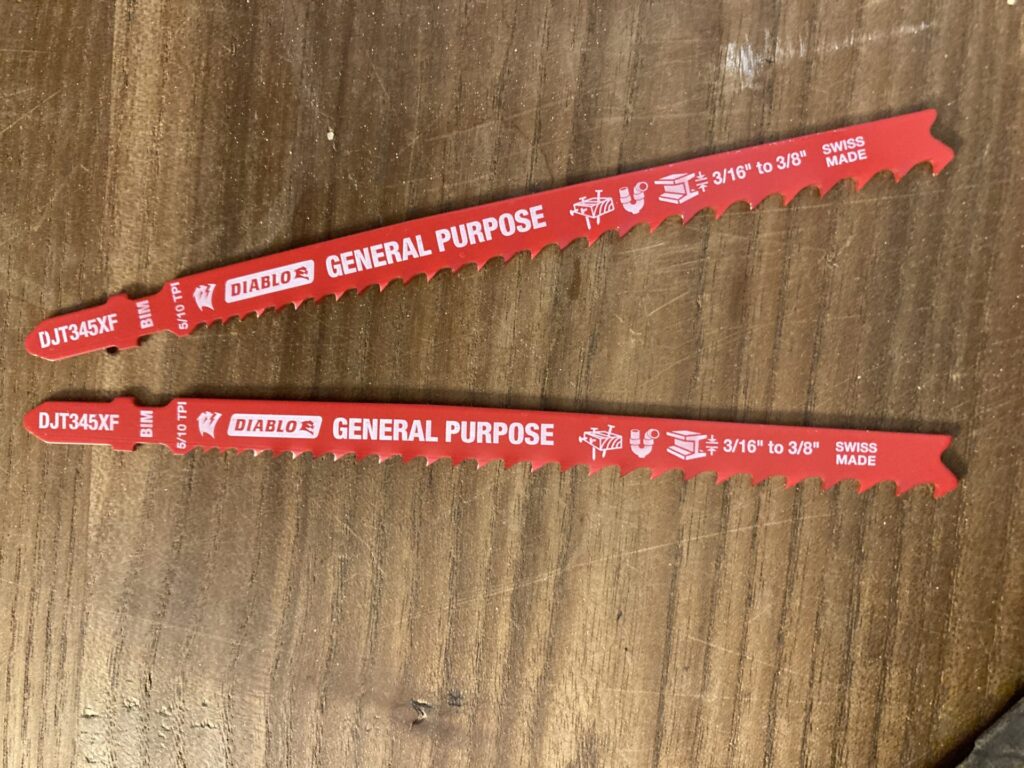
What is a Circular Saw?
A circular saw is a power saw with a circular blade that rotates to cut through materials such as wood, metal, and plastic. Circular saws are best used for making straight cuts and cutting through thick materials. They come in different sizes and types, including handheld and table-mounted models, and with varying blade sizes and types.
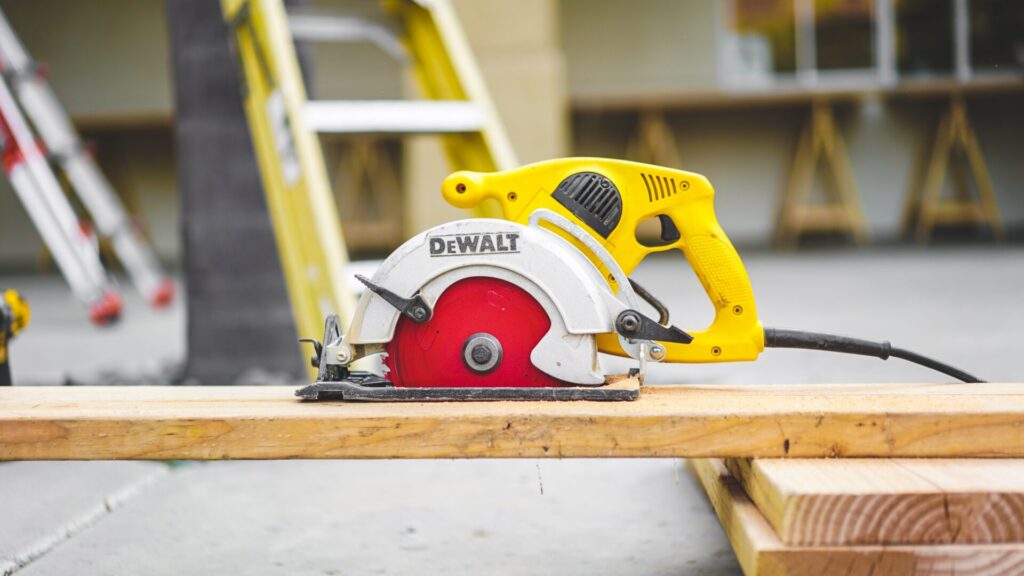
Direction of circular saw blade
Most circular saw blades should rotate in a clockwise direction when you’re looking at the saw from behind. This is known as a “right-handed” blade. The circular saw blade direction should be pointing down towards the workpiece so that they can cut cleanly through the material you’re cutting.
Parts of Circular Saw
Here’s an overview of the parts of a circular saw:
- Blade: The blade is the part of the saw that does the cutting. It’s important to use the right blade for the material you’re cutting and to keep it sharp for the best results.
- Blade Guard: The blade guard is a safety feature that covers the blade when it’s not in use, and retracts when the saw is in use. It helps to protect the user from the spinning blade.
- Shoe or Base Plate: The shoe or base plate is the flat, metal plate that rests on the material being cut. It provides stability and helps to guide the saw in a straight line.
- Depth Adjustment: The depth adjustment allows you to adjust the depth of the blade, so you can make different types of cuts in the material.
- Bevel Adjustment: The bevel adjustment allows you to adjust the angle of the blade for bevel cuts. It’s typically found on the front of the saw.
- Handle: The handle is where you hold the saw while using it. It’s important to have a comfortable grip and good control over the saw.
- Trigger Switch: The trigger switch is what you press to turn the saw on and off. It’s usually located on the handle.
- Power Cord (or Battery): The power cord is what connects the saw to an electrical outlet, while a battery-powered saw runs on a rechargeable battery.
These are the main parts of a circular saw, though different models may have additional features or variations on these basic components. Understanding the parts of your saw can help you use it more effectively and safely.
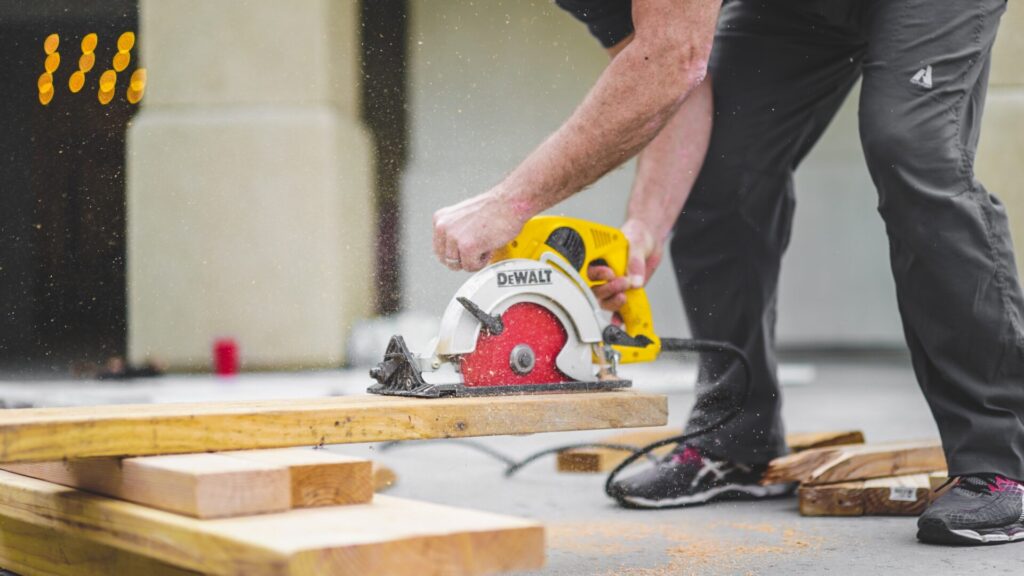
Angle Cut with Circular Saw
To make an angle cut, you’ll need to adjust the angle of the saw’s base plate or shoe using the angle adjustment lever or knob. Most circular saws have an angle range of 0 to 45 degrees, although some models may have a wider range.
To make an angle cut with a circular saw, follow these steps:
- Mark the angle you want to cut on the material you’re cutting using a straightedge or protractor.
- Adjust the angle of the saw’s base plate or shoe to match the angle you marked.
- Set the cutting depth of the saw to the desired depth for the material you’re cutting.
- Hold the saw securely with both hands and position the blade on the material with the blade guard retracted.
- Start the saw and slowly guide it along the cut line. Keep the blade aligned with the mark and the base plate or shoe pressed firmly against the material.
- When you reach the end of the cut, release the trigger and wait for the blade to stop spinning before lifting the saw off the material.
Circular Saw Cutting Depth
As a general rule of thumb, the circular saw cutting depth of the blade should be set so that the blade extends no more than 1/8 inch (or 3 mm) below the material being cut.
It’s important to set the cutting depth correctly for the material you’re cutting. If the cutting depth is too shallow, the saw won’t cut all the way through the material. If it’s too deep, it can cause the saw to bind or kick back, which can be dangerous.
To adjust the cutting depth, first, unplug the saw or remove the battery if it’s a cordless model. Then, loosen the depth adjustment knob or lever and move the base plate up or down to the desired depth. Then tighten the adjustment knob. Make sure the blade isn’t touching the material before you turn the saw on again.
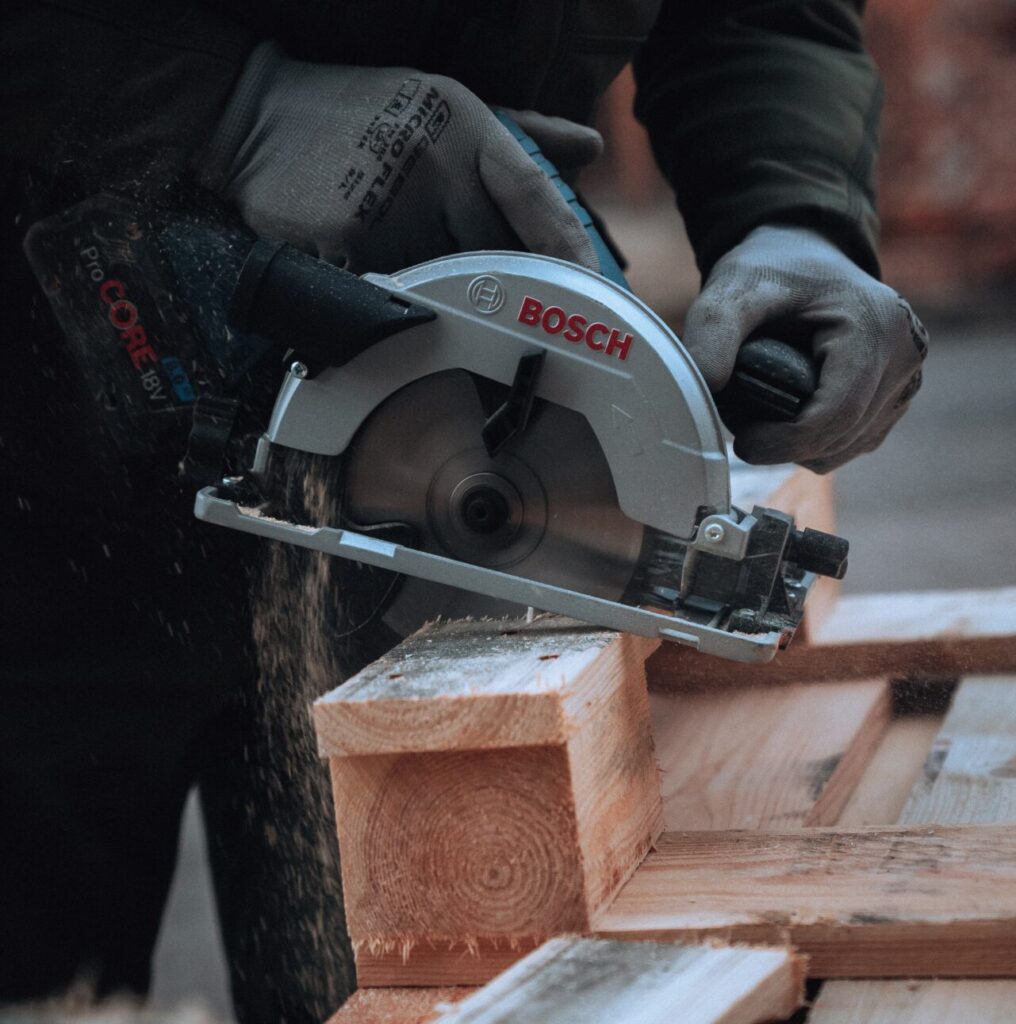
Changing Circular Saw Blade
Here’s a step-by-step guide on how to change a circular saw blade:
- Unplug the saw or remove the battery if it’s a cordless model.
- Use a wrench or key to loosen the arbor nut that holds the blade in place. The arbor nut is usually located at the center of the blade. It may have a lock button that needs to be pressed to keep the blade from spinning.
- Remove the arbor nut, and then remove the blade from the saw.
- Inspect the new blade to make sure it’s the correct size and type for your saw and the material you’re cutting.
- Place the new blade onto the saw’s arbor. Make sure it’s aligned with the arbor hole and any directional arrows on the blade are facing the correct way.
- Replace the arbor nut and tighten it securely with the wrench or key. Make sure the blade is snug and won’t move around.
- Check the blade guard and make sure it’s functioning properly before using the saw.
- Plug the saw back in or reinsert the battery if it’s a cordless model. Test the saw to make sure the blade is spinning correctly.
Jigsaw vs Circular Saw: Which Do I Want?
Choosing between a jigsaw vs circular saw depends on the project you are working on. Here are some factors to consider when deciding which tool is best suited for your needs:
- Type of Cut: Jigsaws are best suited for making curved cuts, intricate designs, and plunge cuts. Circular saws, on the other hand, are best suited for making straight cuts, bevel cuts, and cutting through thick materials.
- Material: If you are working with thin materials such as plywood or MDF, a jigsaw is the better choice. If you are working with thicker materials such as hardwoods or lumber, a circular saw is the better choice.
- Precision: Jigsaws are more precise than circular saws when it comes to making curved cuts and intricate designs. Circular saws, on the other hand, are more precise when making straight cuts.
- Portability: Jigsaws are generally lighter and more portable than circular saws, making them a better choice for smaller projects and those that require maneuverability.
- Safety: Both jigsaws and circular saws can be dangerous if not used properly. However, circular saws have a higher risk of kickback and require more caution when cutting through thick materials.
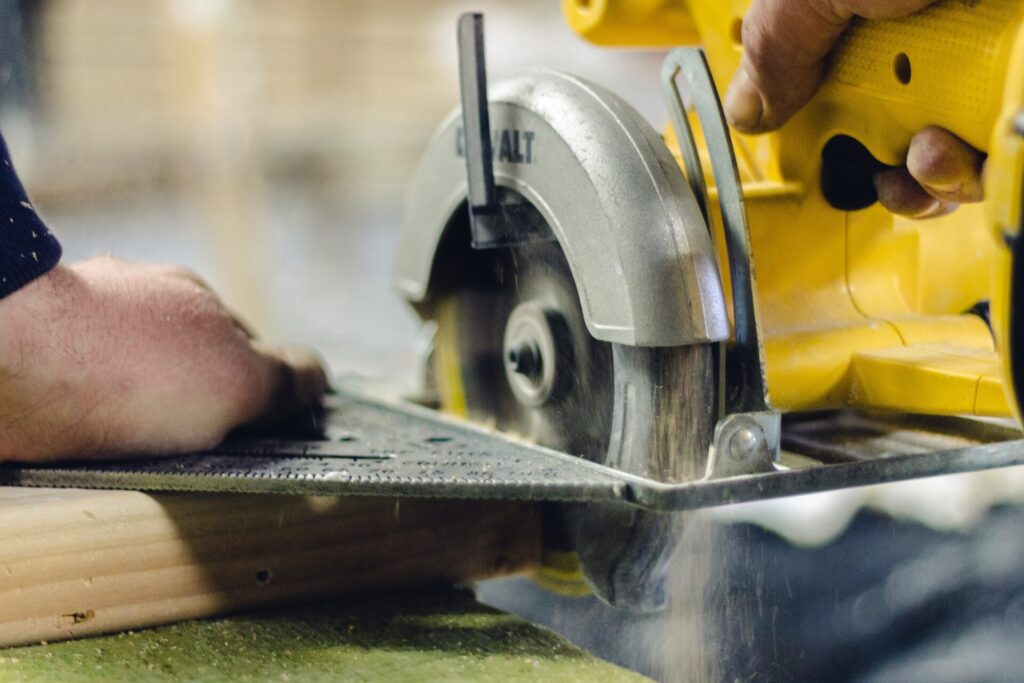
I hope this Jigsaw vs Circular Saw post has been helpful! Leave any questions or saw tips in the comments below!
Want to save or share this Jigsaw vs Circular Saw post? Pin it on Pinterest!




